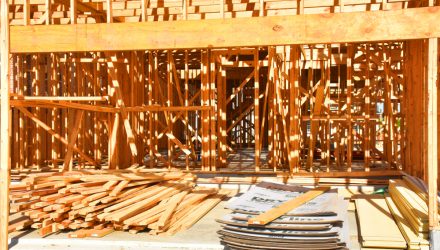Home construction exchange traded funds could maintain their momentum as confidence among U.S. single-family homebuilders is holding up in May despite concerns over the rising costs of building materials.
Year-to-date, the Invesco Dynamic Building & Construction ETF (NYSEArca: PKB) has increased 28.8%.
The National Association of Home Builders/Wells Fargo Housing Market Index remained unchanged at 83 in May, Reuters reports. Readings over 50 signal that builders have a positive view on current market conditions.
“Builder confidence in the market remains strong due to a lack of resale inventory, low mortgage interest rates, and a growing demographic of prospective home buyers,” NAHB Chairman Chuck Fowke said in a statement.
“However, first-time and first-generation home buyers are particularly at risk for losing a purchase due to cost hikes associated with increasingly scarce material availability,” he added.
Covid-19 has forced millions of Americans to work from home or move away from highly populated cities, fueling demand for bigger and more expensive urban housing and driving the current housing market boom.
However, the coronavirus pandemic has also disrupted labor supply at saw mills and ports, which have added to shortages of lumber and other raw materials, raising prices for homebuilders and prospective buyers. Lumber prices jumped 89.7% year-on-year in April, according to the latest producer price data. Tariffs on steel imports are also contributing to the higher building costs.
“Policymakers must take note and find ways to increase production of domestic building materials, including lumber and steel, and suspend tariffs on imports of construction materials,” Fowke said.
According to the NAHB, aggregate residential construction input costs have jumped 12% on an annual basis in recent months.
“Some builders are slowing sales to manage their own supply chains, which means growing affordability challenges for a market in critical need of more inventory,” Robert Dietz, the NAHB’s chief economist, told Reuters.
For more information on the housing market, visit our real estate category.








